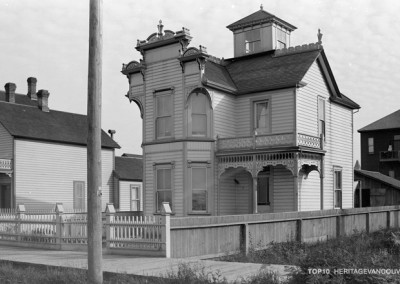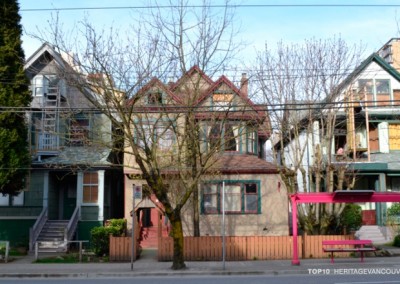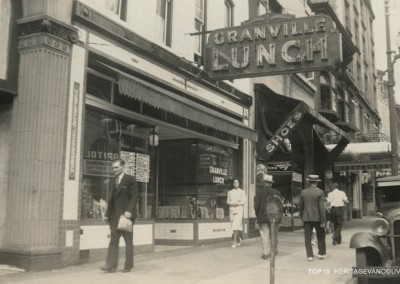A recent trend on the real estate market to sell property for land value alone has the potential to seriously harm the character of First and Second Shaughnessy neighbourhoods through loss of heritage properties. Realtors are advertising historic mansions as teardowns with the opportunity to “build your own dream home”. Heritage Vancouver has selected three homes to represent this growing concern in Shaughnessy.
Threat
What is the threat to First and Second Shaughnessy?
First Shaughnessy was on our Top Ten list in 2003, and the situation has not changed since then. Vancouver’s only residential heritage character area is fast losing its prime heritage stock of pre-1940s houses.
Over time, and despite guidelines and policies intended to protect Shaughnessy’s heritage and character, there has been a rapid erosion of historic building stock.
Many significant heritage houses have been demolished for huge new residences built in a “heritage” style, but lacking much of the ambience and grace of what they have replaced. The pace of replacement has accelerated in recent years, with grand old homes being replaced at a rate of four to six houses a year.
Land values and the resulting development pressure encourage owners to tear down original homes to achieve the maximum square footage allowable for the generous lots. Despite the restrictions of the First Shaughnessy Overall Development Plan and the heritage inventory in Second Shaughnessy, local realtors are advertising Shaughnessy heritage properties as teardowns with the opportunity to “build your dream home”.
Aggressive developers and architects are advising clients that any house can be demolished, as long as they are willing to manoeuvre their way through the city’s Planning Department and the Advisory Design Panel. These two bodies have no power to prevent demolition of heritage buildings and, more importantly, no convincing incentives for owners to retain these homes. Some real estate agents see the value mainly in the land, and are marketing to investors who are not being given information about the heritage value of these historic neighbourhoods, and the potential investment value of these prestige heritage homes.
The following three houses are typical of houses in First and Second Shaughnessy on the market for their land value.
- 3738 Hudson Street: This handsome dwelling, complete with its intact period interiors, was built for G.W.T. Hobson in 1910. The real estate agent for Dexter Realty describes the property in the following way: “this desirable property, priced for land value, is an opportunity to acquire almost three quarters of an acre in First Shaughnessy, Vancouver’s most prestigious neighbourhood. Also ready to go are architectural plans for a gracious new 14,000 square foot mansion.” On two occasions, in 2007 and 2011, the First Shaughnessy Advisory Design Panel reviewed the potential demolition, and urged retention of the house. Demolition of this house would remove a significant amount of the historic fabric of the Hudson streetscape. [UPDATE: demolished April 2013]
- 1550 Marpole Avenue was built in 1910 for a CPR Superintendent, and is listed as a “B” on the Vancouver Heritage Register. The 7,000 square foot former seniors’ home is located on a substantial view property. Originally the real estate agent from Park Georgia Realty proposed the potential for a multiple conversion for the main house along with the possibility of two, if not three, infill dwellings on nearly an acre of land. Now, the site is described as an “Estate like property ready for development, an excellent holding property or build your dream home.” With a four-storey Tudor Revival mansion on what is one of the few, true remaining estate-like Shaughnessy lots, and extensive historic woodwork throughout the interior, the house deserves to have its status as a heritage property respected.
- 5087 Connaught Drive was designed by Vancouver’s most renowned architects, from the 19th and early 20th centuries, Samuel Maclure and Ross Lort. This 1920 Tudor Revival-style house was built as the guest cottage for the substantial Tudor with Dutch-weaved roof at 5055 Connaught. The real estate agent for Remax Realty advertises the “cottage” as, “Perched high on the west side of Connaught Drive, any future new home would enjoy delightful views of the mountains, city and water. Perfect to build your dream home.” This beautifully-designed and gracious house completes one of the few blocks in Second Shaughnessy that retains its predominantly period architecture.
This blatant promotion of these heritage sites as “unencumbered land” as the best investment value also flies in the face of the true value of these fine older homes, and their excellent performance on the real estate market.
An example is the success story of 1699 Matthews Street, which was bought for $1.5 million, fully updated and landscaped with a new studio/garage for another $1.5 million, and was sold only six years later for $6 million. The owners left the neighbourhood a cherished “A” quality house and doubled their investment through a full heritage award-winning restoration.
Significance
Why is Shaughnessy significant?
Shaughnessy is significant as the area of prestige housing that was developed by the CPR at the beginning of the twentieth century. In order to protect the quality and character of the area, design approvals were initiated that ensured the high quality and Craftsmanship of the homes in the area. They were the best in the city – glorious Edwardian-era mansions set on generous lots in a setting of luxuriant landscaping.
Generally designed in a variation of the British Arts and Crafts influence, these gracious residences represent a regional architectural response to our rainforest climate – not unlike the Scottish climate where the primary goal is “to keep the rain out and let the light in.”
Large overhangs, stone “splashback” foundations, shingle-and-lap siding, wood instead of more porous brick, covered entries and porte-cocheres are early examples of influential West Coast design. Large park-like grounds set off relatively modest architectural aspirations. Materials were regional and authentic; robust wood detailing, inside and out, distinguish these houses today.
Also, Shaughnessy is more than the sum of its individual parts; it has its own heritage character based on the total effect of its houses, landscaping and urban design that are representative of an earlier era.
Position
Heritage Vancouver’s Position
The value of our heritage areas should be promoted, for their contributions to cultural tourism, as community amenities and as sound business investments. We will work with community partners, such as Tourism Vancouver and the Real Estate Board, to promote our heritage buildings, and our heritage areas, as an investment in our future.
Heritage Vancouver also recommends that the City of Vancouver take the following actions:
- Update the First Shaughnessy Overall Development Plan adopted in 1982.
- Reinstate The Shaughnessy Architectural and Landscape Inventory, dropped in 1994 due to Planning Department “housekeeping”.
- Add all pre-1940 houses identified in the Shaughnessy Architectural and Landscape Inventory to the Vancouver Heritage Register.
- Remove the word “character” from the First Shaughnessy Overall Development Plan and legally designate the neighbourhood as a Heritage Area.
- A concise summary of the First Shaughnessy Guidelines and neighourhood success stories should be developed for the City’s website so that City policies are clearly explained and readily available for prospective homebuyers and real estate agents.
Updates
September 29, 2015: The First Shaughnessy Heritage Conservation Area (HCA) was PASSED unanomously by Council September 29! We thank everyone who took the time to write in and/or present to Council during this process.
May 2013: 3738 Hudson Street (1910) was fully demolished, April 2013
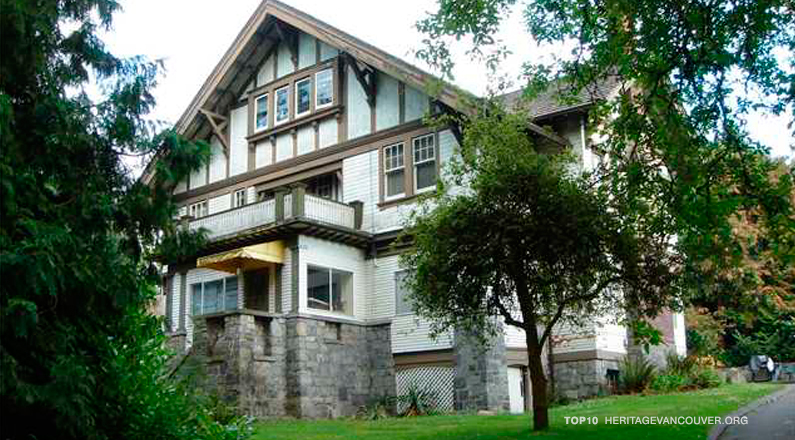


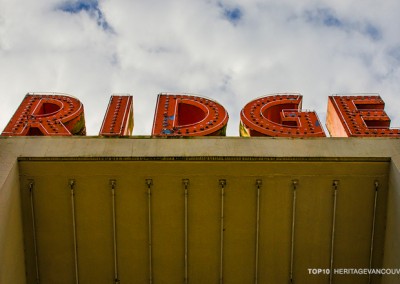
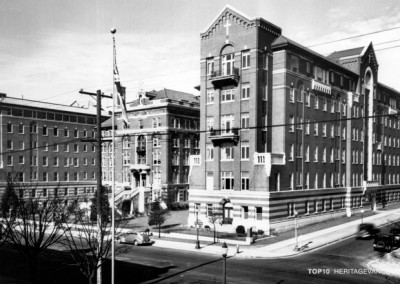
![4. Schools: Sir James Douglas Elementary (1910-12) [lost]](http://heritagevancouver.org/wp-content/uploads/2012/08/t10-school-douglas-795-400x284.jpg)
